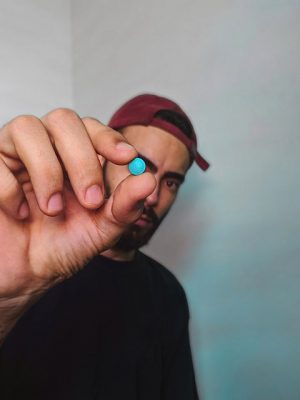Botox treatments have emerged as a popular and effective non-surgical option for facial aesthetics. By injecting a bacterial protein into specific muscles, it smooths and revitalizes skin by temporarily paralyzing or weakening them, reducing the appearance of wrinkles and fine lines. Ideal candidates are those with realistic expectations regarding results and dynamic line reduction through muscle movement. Post-treatment side effects are usually temporary, and patients should follow aftercare instructions for optimal results. While effective, Botox treatments carry potential side effects that typically resolve within a few days. Regular follow-up sessions every few months are recommended to maintain results. The cost of Botox treatments varies based on the treatment area, units used, and clinic location, with average prices ranging from $150-$400 per session. Choosing a board-certified dermatologist or experienced plastic surgeon is crucial for safety and satisfaction.
Botox has emerged as a popular choice for achieving smooth, youthful-looking skin. This article delves into the world of Botox treatments for facial smoothing, offering a comprehensive guide. From understanding the science behind this powerful serum to exploring its numerous benefits, we cover all aspects. Learn about candidate selection, the procedure, recovery tips, and more. Discover why Botox is a leading anti-aging solution and how to make informed decisions regarding cost, provider choice, and long-term maintenance.
Understanding Botox: The Science Behind the Serum

Botox, a protein derived from bacteria, has revolutionized facial smoothing and anti-aging treatments. Its scientific prowess lies in its ability to temporarily paralyze or weaken specific muscles, reducing the appearance of wrinkles and fine lines. When injected into targeted areas of the face, Botox disrupts muscle contraction, preventing the formation of dynamic wrinkles caused by recurring facial expressions.
This serum’s effectiveness stems from its natural disruption of neuromuscular transmission. It binds to specific receptors on muscle cells, blocking the signal that triggers muscle contraction. The result is a smoothed and rejuvenated complexion, offering a non-surgical alternative to surgical facelifts for those seeking Botox treatments.
Benefits of Botox for Facial Smoothing

Botox has emerged as a popular and effective solution for achieving a smoother, more youthful-looking face. One of the key benefits is its ability to reduce the appearance of fine lines and wrinkles, especially around the eyes, forehead, and mouth. These are areas where facial expressions tend to create dynamic lines that can become more pronounced over time. Botox treatments work by relaxing specific muscle groups, preventing them from contracting and causing those telltale creases.
Additionally, Botox offers a non-invasive approach to skincare, making it an attractive option for individuals seeking a less drastic alternative to surgical procedures. The treatments are typically quick, with minimal recovery time, and results can last for several months, providing a long-lasting effect. This versatility has made Botox a go-to choice for many, allowing them to maintain a youthful appearance while feeling confident in their skin’s natural state.
Candidate Selection: Who is a Good Fit?

Botox treatments have become increasingly popular for facial smoothing, but not everyone is a good candidate for this cosmetic procedure. The ideal candidates are typically individuals who have mild to moderate frown lines, forehead wrinkles, or crow’s feet that they would like to reduce. It’s essential to have realistic expectations and understand that Botox works best on dynamic lines caused by muscle movement, rather than static lines of expression.
During the initial consultation, a qualified dermatologist or plastic surgeon will assess your skin, medical history, and lifestyle to determine if you’re an appropriate candidate. They will consider factors like age, overall health, and any medications you may be taking that could affect treatment outcomes. Understanding these considerations ensures the best possible results and minimizes potential risks associated with Botox treatments.
The Procedure: What to Expect During Treatment

During a Botox treatment, a small amount of Botox is injected into specific facial muscles. This procedure is typically non-invasive and can be performed in a doctor’s office. The injections target dynamic lines and wrinkles caused by muscle movement, such as frown lines, crow’s feet, and forehead wrinkles. Patients usually experience minimal discomfort during the treatment, with some reporting only a slight pinching sensation.
After the procedure, there may be mild redness, swelling, or bruising at the injection sites, but these side effects are usually temporary and subside within a few days. It is important to follow your doctor’s post-treatment instructions, which may include avoiding strenuous activity and protecting the treated area from the sun. Patients often notice results within 2-4 days, with the full effect becoming apparent after about a week.
Recovery and Aftercare: Tips for Optimizing Results

After a Botox treatment, it’s crucial to understand that recovery is a gradual process. You may experience mild swelling, bruising, or discomfort in the treated areas—these are normal side effects and usually subside within a few days. To optimize results, it’s essential to follow aftercare instructions diligently. This includes avoiding strenuous activities and direct sun exposure for the first 24 hours post-treatment. Stay hydrated by drinking plenty of water and avoid alcohol consumption as it can prolong bleeding and swelling.
Additionally, gentle skincare is paramount. Use a mild cleanser and apply a cold compress to reduce any lingering inflammation. Avoid makeup for at least 24 hours and protect your skin from the sun with broad-spectrum sunscreen. Remember, each Botox treatment is unique, so be patient as results may vary based on several factors including muscle activity and individual metabolism.
Common Side Effects and Management

Botox treatments, like any medical procedure, come with potential side effects. The most common include temporary redness, swelling, and bruising at the injection site. These usually subside within a few days. Some individuals may experience mild headaches or muscle stiffness, especially around the face and neck.
To manage these side effects, patients are advised to rest, apply cold compresses, and avoid strenuous activities for the first 24 hours post-treatment. Over-the-counter pain relievers can help alleviate any discomfort. It’s essential to consult with your healthcare provider if symptoms persist or worsen, ensuring proper care and monitoring throughout the recovery process.
Long-Term Effectiveness and Maintenance

Botox treatments for facial smoothing have proven effective in reducing the appearance of fine lines and wrinkles over time. The results typically last between 3 to 6 months, offering a significant improvement in skin texture and overall youthful appearance. This long-term effectiveness makes Botox an attractive option for individuals seeking a more permanent solution to their cosmetic concerns.
Maintenance is key to preserving the results of Botox treatments. To maintain optimal outcomes, follow-up sessions are recommended every few months. These maintenance injections help neutralize the effects of muscle movement, preventing the recurrence of wrinkles and maintaining the smooth, rejuvenated look achieved during the initial treatment. Regular upkeep ensures that the benefits of Botox continue over an extended period.
Cost Considerations and Insurance Coverage

Botox treatments for facial smoothing have become increasingly popular, but it’s essential to consider the cost before proceeding with any cosmetic procedure. The expense can vary widely depending on several factors, including the area being treated, the number of units of Botox used, and the location of the clinic. On average, a single Botox treatment session can range from $150 to $400 per area, with some areas of the face costing more than others. For instance, treating crow’s feet or frowning muscles typically requires fewer injections than full facial smoothing, which can affect the overall price.
Insurance coverage for Botox treatments is another crucial consideration. Unfortunately, cosmetic procedures like Botox are usually not covered by standard health insurance plans since they’re considered elective enhancements. However, some policies may offer limited coverage if Botox is used to treat specific medical conditions, such as excessive sweating (hyperhidrosis). It’s always a good idea to check with your insurance provider beforehand and understand what expenses you might be responsible for out-of-pocket.
Choosing the Right Provider: Tips for Safety and Satisfaction

When considering Botox treatments for facial smoothing, choosing the right provider is paramount for safety and satisfaction. Look for board-certified dermatologists or experienced plastic surgeons who specialize in injectables. Reputable professionals will have extensive training and a proven track record of successful procedures, ensuring you receive expert care.
Beyond certification, ask about their approach to consultations. A thorough consultation should include assessing your specific concerns, discussing expectations, and reviewing potential risks and side effects. It’s also wise to inquire about the products they use, as high-quality Botox injections are crucial for optimal results and minimal complications.
